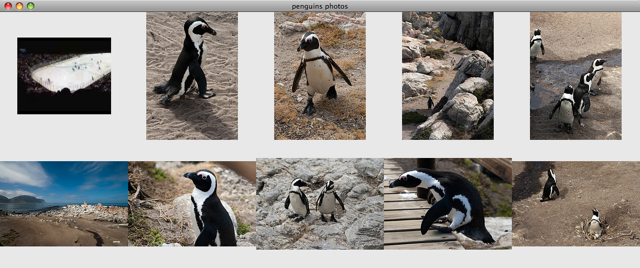搶佔先機
VMware 提供培訓和認證,助您快速進步。
瞭解更多在之前的一篇文章中,我寫了關於我們在 Spring @MVC 3.0 版本中新增的 REST 功能。後來,Alef 寫了一篇文章,介紹瞭如何使用這些功能為 Pet Clinic 應用程式新增 Atom 檢視。在這篇文章中,我想介紹一下我們在 Milestone 2 中新增的客戶端功能。
該模板的主要入口點以六個主要的 HTTP 方法命名
這些方法的名稱清楚地表明它們呼叫了哪個 HTTP 方法,而名稱的第二部分則表明了返回值。例如,getForObject()將執行 GET 請求,將 HTTP 響應轉換為您選擇的物件型別,並返回該物件。postForLocation將執行 POST 請求,將給定物件轉換為 HTTP 請求,並返回響應中的 HTTP Location 頭,其中可以找到新建立的物件。如您所見,這些方法試圖強制遵循 REST 最佳實踐。
這些方法都將 URI 作為第一個引數。該 URI 可以是一個 URI 模板,並且可以使用變數將模板擴充套件為普通 URI。模板變數可以透過兩種形式傳遞:作為 String 變數引數陣列,或作為 Map<String, String>。String varargs 變體按順序擴充套件給定的模板變數,因此
String result = restTemplate.getForObject("http://example.com/hotels/{hotel}/bookings/{booking}", String.class, "42", "21");
將對以下 URI 執行 GET 請求:http://example.com/hotels/42/bookings/21。Map 變體根據變數名擴充套件模板,因此在使用許多變數或單個變數被多次使用時更有用。例如
Map<String, String> vars = new HashMap<String, String>();
vars.put("hotel", "42");
vars.put("booking", "21");
String result = restTemplate.getForObject("http://example.com/hotels/{hotel}/bookings/{booking}", String.class, vars);
也將對以下 URI 執行 GET 請求:http://example.com/hotels/42/rooms/42.
<photos page="2" pages="89" perpage="10" total="881">
<photo id="2636" owner="47058503995@N01"
secret="a123456" server="2" title="test_04"
ispublic="1" isfriend="0" isfamily="0" />
<photo id="2635" owner="47058503995@N01"
secret="b123456" server="2" title="test_03"
ispublic="0" isfriend="1" isfamily="1" />
<photo id="2633" owner="47058503995@N01"
secret="c123456" server="2" title="test_01"
ispublic="1" isfriend="0" isfamily="0" />
<photo id="2610" owner="12037949754@N01"
secret="d123456" server="2" title="00_tall"
ispublic="1" isfriend="0" isfamily="0" />
</photos>
使用 RestTemplate,獲取這樣的文件非常簡單:
final String photoSearchUrl =
"http://www.flickr.com/services/rest?method=flickr.photos.search&api+key={api-key}&tags={tag}&per_page=10";
Source photos = restTemplate.getForObject(photoSearchUrl, Source.class, apiKey, searchTerm);
其中apiKey和searchTerm是命令列上給定的兩個字串。此方法使用SourceHttpMessageConverter將 HTTP XML 響應轉換為javax.xml.transform.Source(請注意,SourceHttpMessageConverter 是我們在釋出 Spring 3.0 M2 後不久引入的,因此您需要獲取最新的快照版本(或即將釋出的 M3)才能使用它。下面提供的示例專案已配置為透過 Maven 獲取這些依賴項)。
List<BufferedImage> imageList = xpathTemplate.evaluate("//photo", photos, new NodeMapper() {
public Object mapNode(Node node, int i) throws DOMException {
Element photo = (Element) node;
Map<String, String> variables = new HashMap<String, String>(3);
variables.put("server", photo.getAttribute("server"));
variables.put("id", photo.getAttribute("id"));
variables.put("secret", photo.getAttribute("secret"));
String photoUrl = "http://static.flickr.com/{server}/{id}_{secret}_m.jpg";
return restTemplate.getForObject(photoUrl, BufferedImage.class, variables);
}
});
例如,給定上面提供的 XML 文件,imageList將包含 4 張圖片。獲取的第一張圖片的 URL 將是http://static.flickr.com/2/2636_ a123456_m.jpg,第二張是http://static.flickr.com/2/2635_ b123456_m.jpg,等等。
public class BufferedImageHttpMessageConverter implements HttpMessageConverter<BufferedImage> {
public List<MediaType> getSupportedMediaTypes() {
return Collections.singletonList(new MediaType("image", "jpeg"));
}
public boolean supports(Class<? extends BufferedImage> clazz) {
return BufferedImage.class.equals(clazz);
}
public BufferedImage read(Class<BufferedImage> clazz, HttpInputMessage inputMessage) throws IOException {
return ImageIO.read(inputMessage.getBody());
}
public void write(BufferedImage image, HttpOutputMessage message) throws IOException {
throw new UnsupportedOperationException("Not implemented");
}
}
請注意,我們沒有實現write()因為我們不是上傳圖片,只是下載它們。現在我們只需將這個轉換器插入 RestTemplate。我們在 Spring 應用程式上下文中這樣做:
<beans xmlns="http://www.springframework.org/schema/beans"
xmlns:xsi="http://www.w3.org/2001/XMLSchema-instance"
xsi:schemaLocation="http://www.springframework.org/schema/beans http://www.springframework.org/schema/beans/spring-beans.xsd">
<bean id="flickrClient" class="com.springsource.samples.resttemplate.FlickrClient">
<constructor-arg ref="restTemplate"/>
<constructor-arg ref="xpathTemplate"/>
</bean>
<bean id="restTemplate" class="org.springframework.web.client.RestTemplate">
<property name="messageConverters">
<list>
<bean class="org.springframework.http.converter.xml.SourceHttpMessageConverter"/>
<bean class="com.springsource.samples.resttemplate.BufferedImageHttpMessageConverter"/>
</list>
</property>
</bean>
<bean id="xpathTemplate" class="org.springframework.xml.xpath.Jaxp13XPathTemplate"/>
</beans>
JFrame frame = new JFrame(searchTerm + " photos");
frame.setLayout(new GridLayout(2, imageList.size() / 2));
for (BufferedImage image : imageList) {
frame.add(new JLabel(new ImageIcon(image)));
}
frame.setDefaultCloseOperation(JFrame.EXIT_ON_CLOSE);
frame.pack();
frame.setVisible(true);
結果如下:

總的來說,我希望這篇文章向您展示了使用 RestTemplate 與 HTTP 伺服器互動是多麼簡單。只需不到 30 行 Java 程式碼,我們就建立了一個 GUI,可以顯示每個人最喜歡的鳥類的照片:企鵝!檢視 RestTemplate 並告訴我們您的想法!